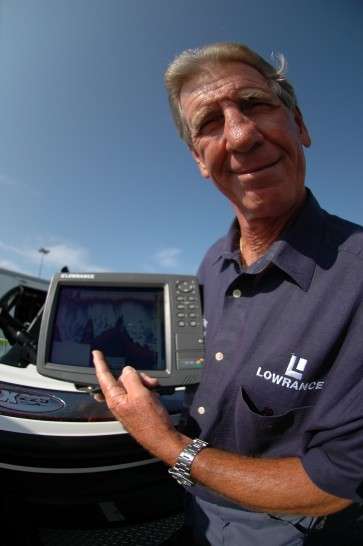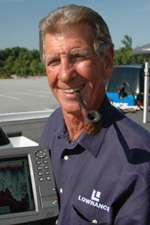
Editor’s note: This is the sixth of a series by Wilson Frazier covering every aspect of how to use, and get more out of, your electronics. Frazier is one of the leading experts in the industry on the setup and use of electronics. For more information, visit his website.
Part 6: Data overlay options
In this lesson we’re going to take a look at some of the data overlay options you have as well as when and why you might want to use, or not use, them. Let’s start by defining data overlay.
Data overlay is information that you can display on your screen — information that won’t be displayed unless you put it there. Depending upon the type and age of your particular unit, and the data you want to display, it may be available in analog, digital or graph format. Check your operator’s manual to see what’s available on your unit.
Water temperature is almost always something we want to know. Display it anyway you want, but it should probably be on every page. For most anglers a digital display works best. Adjust the size of the display panel so that you can read the numbers quickly and easily but don’t make them so big that they block the sonar or map display.
Water depth should be displayed in digital form on all pages including your map pages. When you’re on sonar pages, train yourself to look at the ruler on the right side of the page. This will help you understand where you are and what’s in the water column under your boat. [For a different point of view see Shaw Grigsby’s comments on this in the Pro Angler Tip at the end of Lesson 3.]
Course over ground (COG) is also important. This gives you your compass heading and the direction you’re moving. You need this to return to your waypoints correctly. (This is covered in detail in GPS 101 of my lesson series.)
Speed over ground (SOG) is another overlay that you should always have available on all of your pages. It tells you how fast you’re covering ground. (OK, you’re on water, but you get the point.) You need to know that so you can accurately measure distance and time as you approach your destination. It’ll also tell you how far behind your boat what you’re seeing on your sonar is really located.
Do not confuse this with water speed. That’s current speed, as in rivers and oceans.
Battery voltage is something anglers neglect to display but it can be important. It’ll tell you when your starting battery is getting low. Your staring battery runs everything except your trolling motor. You can charge it with your outboard in just a few minutes and avoid a lot of hassle and lost fishing time.
Trip distance is useful if you want to know how far you have run — like along a channel. That’ll give you a better estimate of travel time and of fuel capacity and usage.
Altitude above sea level will tell you how accurate your map lines are and help you determine changes in the water level. It could save you a long run to a fishing area that is now dry.
Estimated position error (EPE) shouldn’t be ignored. It’ll let you know how accurate your GPS position is so that you can correctly mark waypoints, return to them and follow trails when position errors can be dangerous and expensive.
Having the right overlay on the right pages is critical to your fishing success. Use them.
Pro Angler Tip: Overlays can be used for more than one purpose. Elite Series pro Stephen Browning puts an SOG overlay on all of his Raymarine screens. “I don’t do it so that I know how fast I’m going when I’m running down the lake. I do it so that when I’m drifting or just fishing along I can keep control of my speed — not too fast, not too slow. That helps me cover water efficiently.”
In part 7 I’ll try to answer some of the most common questions I get in my classes and through my website.
More in this series: Basic sonar | Basic GPS | Tweaking your unit | What sonar shows you | What GPS shows you





